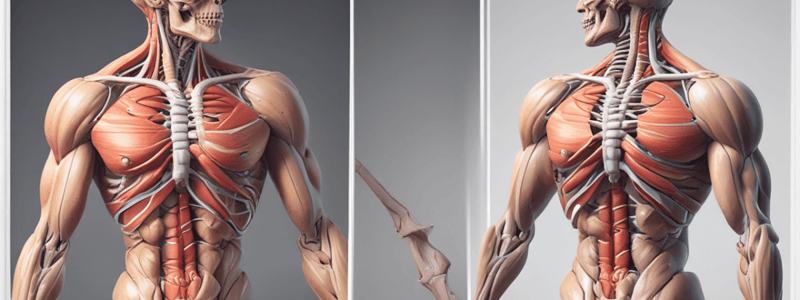Podcast
Questions and Answers
Which of the following best describes joint mobility?
Which of the following best describes joint mobility?
- The ability to coordinate eye and hand movements
- The involuntary contraction of muscles in response to a stimulus
- The ease with which a joint moves through its range of motion (correct)
- The strength of a muscle to move a joint
What is the primary function of joint stability?
What is the primary function of joint stability?
- To allow for involuntary muscle contractions
- To sustain muscle contractions for prolonged periods
- To maintain the structural integrity and proper alignment of joints (correct)
- To coordinate eye and foot movements
Which of the following best describes muscle power?
Which of the following best describes muscle power?
- The natural tension present in muscles at rest
- The force with which a body part must move, requiring muscle strength (correct)
- The involuntary contraction of muscles in response to stretching
- The ability to sustain muscle contractions for extended periods
What is the term used to describe the natural tension present in muscles when at rest?
What is the term used to describe the natural tension present in muscles when at rest?
Which of the following is an example of an involuntary movement reaction?
Which of the following is an example of an involuntary movement reaction?
What is the term used to describe the ability to coordinate information from the eyes with the movement of the hands or feet?
What is the term used to describe the ability to coordinate information from the eyes with the movement of the hands or feet?
Which of the following is an example of a motor reflex?
Which of the following is an example of a motor reflex?
What is the term used to describe the movements used in walking?
What is the term used to describe the movements used in walking?
Which of the following is an example of fine motor control?
Which of the following is an example of fine motor control?
What is the term used to describe the ability to use both sides of the body collaboratively to complete a task?
What is the term used to describe the ability to use both sides of the body collaboratively to complete a task?




